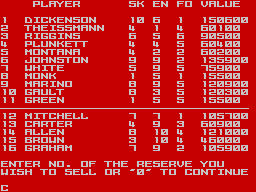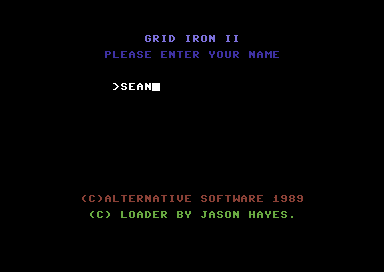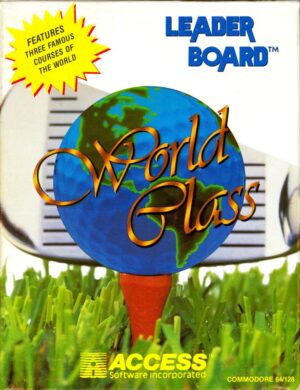Retro Replay Review
Gameplay
Grid Iron 2 offers a deep dive into American football management through a straightforward, menu-driven interface. From the moment you start, you’re presented with 16 authentic teams—from the Dolphins to the Packers and 49ers—each with its own roster of athletes rated on skill, energy, and form out of 10. Building your squad and watching those ratings fluctuate provides a constantly evolving challenge.
One of the game’s most distinctive features is its soccer-style transfer market. Instead of relying on a traditional US draft, you can negotiate mid-season trades for monetary compensation, giving you the flexibility to buy or sell players as injuries or slumps occur. This system adds a thrilling strategic layer where timing and budget management are crucial.
Once match day arrives, Grid Iron 2 shifts to a remote highlight presentation. You won’t have direct tactical control during plays—instead, you watch key moments unfold and hope your roster decisions pay off. While this hands-off approach may frustrate those seeking real-time play-calling, it emphasizes macro-level management rather than on-field micromanagement.
In addition, the lack of distinct pitch markings—an aesthetic holdover from the original Softstone release—gives matches a slightly abstract feel. Purists might miss crisp field graphics, but the style keeps the focus squarely on results and statistics rather than visual flourishes.
Graphics
Visually, Grid Iron 2 embraces functional minimalism. The main attraction of the presentation is the highlight reels, which display player sprites dashing across a neutral-toned field devoid of the detailed yard lines and endzone logos you might expect. This pared-down approach keeps performance smooth even on modest hardware.
The menu screens are clean and clearly laid out, with player portraits, numerical ratings, and transfer options all easily accessible. While there’s no flashy animation or high-definition cutscenes, the straightforward UI ensures you can manage your team efficiently without getting lost in submenus.
Highlight sequences use simple pixel art to depict tackles, passes, and touchdowns. Though they lack the polish of modern 3D engines, they convey the core drama of the sport. Each replay is quick, letting you absorb results before hurrying back to the transfer market or training fields.
Overall, the graphics serve the game’s simulation focus. If you’re looking for visual spectacle, this isn’t it—but for fans who prefer crisp data presentation and functional displays, Grid Iron 2’s aesthetic is perfectly serviceable.
Story
Grid Iron 2 doesn’t feature a scripted narrative or cutscenes; its “story” emerges from the ebbs and flows of a football season. As a general manager, you craft your own saga by recruiting star players, engineering blockbuster trades, and steering your franchise toward the playoffs.
Over multiple seasons, you’ll witness rising rookies become household names and veteran stars decline. Managing player morale, balancing finances, and adapting to injuries builds a compelling personal tale that reflects the highs and lows of real-world sports management.
The lack of a linear storyline is intentional—there’s no hand-holding or predetermined plot. Instead, each decision you make writes a new chapter. Whether you lead a perennial underdog to an unlikely championship or burn bright before collapsing, your unique journey fuels the game’s long-term appeal.
Overall Experience
Grid Iron 2 delivers a focused management simulation that will captivate strategy-oriented football fans. Its menu-driven system and soccer-style transfer market provide fresh twists on the genre, rewarding thoughtful roster-building over joystick skills. If you thrive on balancing budgets, scouting talent, and fine-tuning player lineups, this title hits the mark.
The absence of direct in-game control may not satisfy players craving live-action gameplay, but it reinforces the managerial atmosphere. Watching highlights instead of commanding every play offers a bird’s-eye view of your franchise’s successes and failures—making each win feel like validation of your broader strategy.
Although the graphics are utilitarian and the presentation minimalistic, they underscore the game’s core strengths: depth, replayability, and statistical nuance. Rarely does a football manager let you orchestrate mid-season cash trades or track form so granularly.
In the end, Grid Iron 2 is a niche gem for dedicated tacticians and armchair GMs. Its straightforward interface and robust mechanics ensure countless hours of football immersion, even if you never call a single on-field play. For anyone seeking a cerebral approach to America’s favorite sport, this management sim is well worth the huddle.
 Retro Replay Retro Replay gaming reviews, news, emulation, geek stuff and more!
Retro Replay Retro Replay gaming reviews, news, emulation, geek stuff and more!









Reviews
There are no reviews yet.